| History of the Basilone Parade |
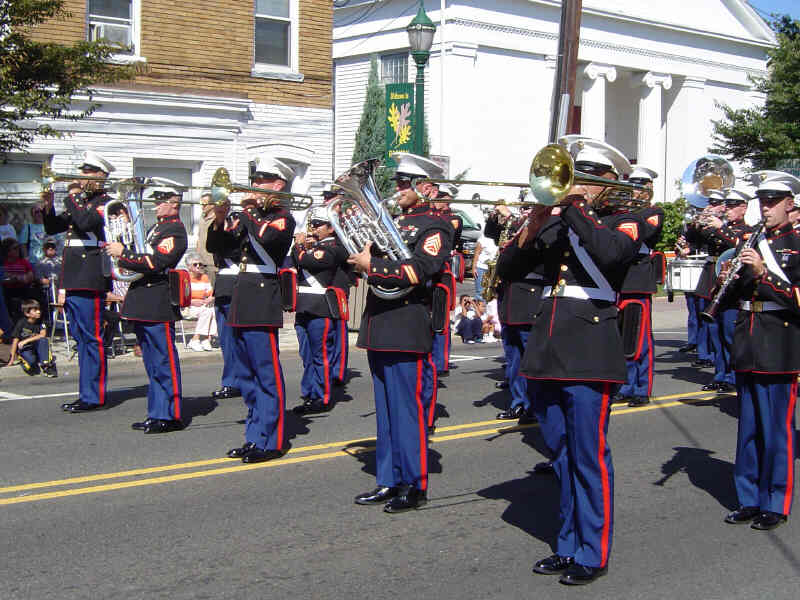 |
The origins of today’s parade start in 1981, but before we speak of that it should be remembered that during World War II,
in 1943, another parade marched through Raritan. |
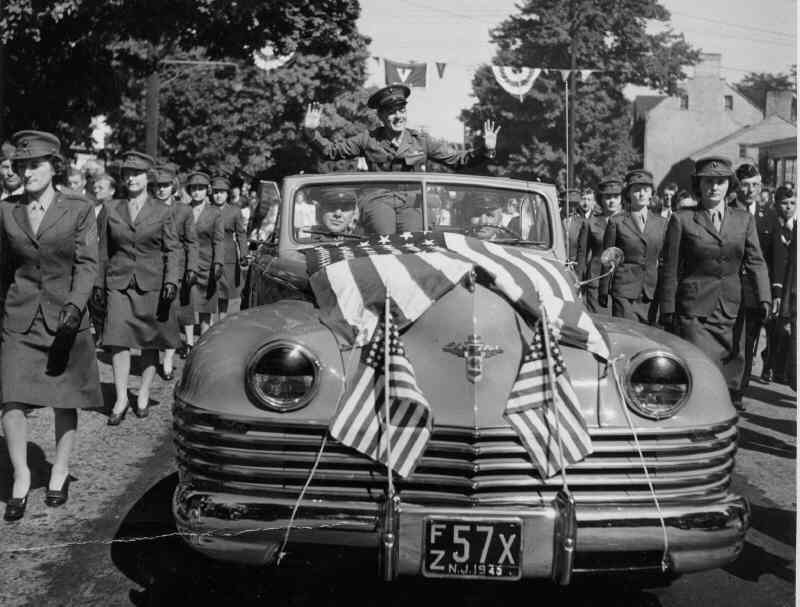 |
This was the “Welcome Home Parade” for John Basilone.
He had been awarded the “Congressional Medal of Honor”
for his heroics at Guadalcanal in October of 1942.
Basilone held off a determined enemy that was trying to capture a U.S. airfield.
|
Basilone on Somerset Street in Raritan.
The building that is now the library
can be seen on the top right. |
 |
Throughout the battle he killed 38 enemy soldiers, repaired a damaged machine gun in the dark,
and made a dangerous run through the jungle to bring back ammunition.
The military ordered Sgt. John Basilone back to the “home front” for a bond tour, but first he was sent home to Raritan for a parade.
Over 30,000 attended the parade and the rally afterwards. The parade/rally was covered by Life Magazine and the movie newsreels.
Basilone later returned to the war and was killed at Iwo Jima during the first wave of the assault. |
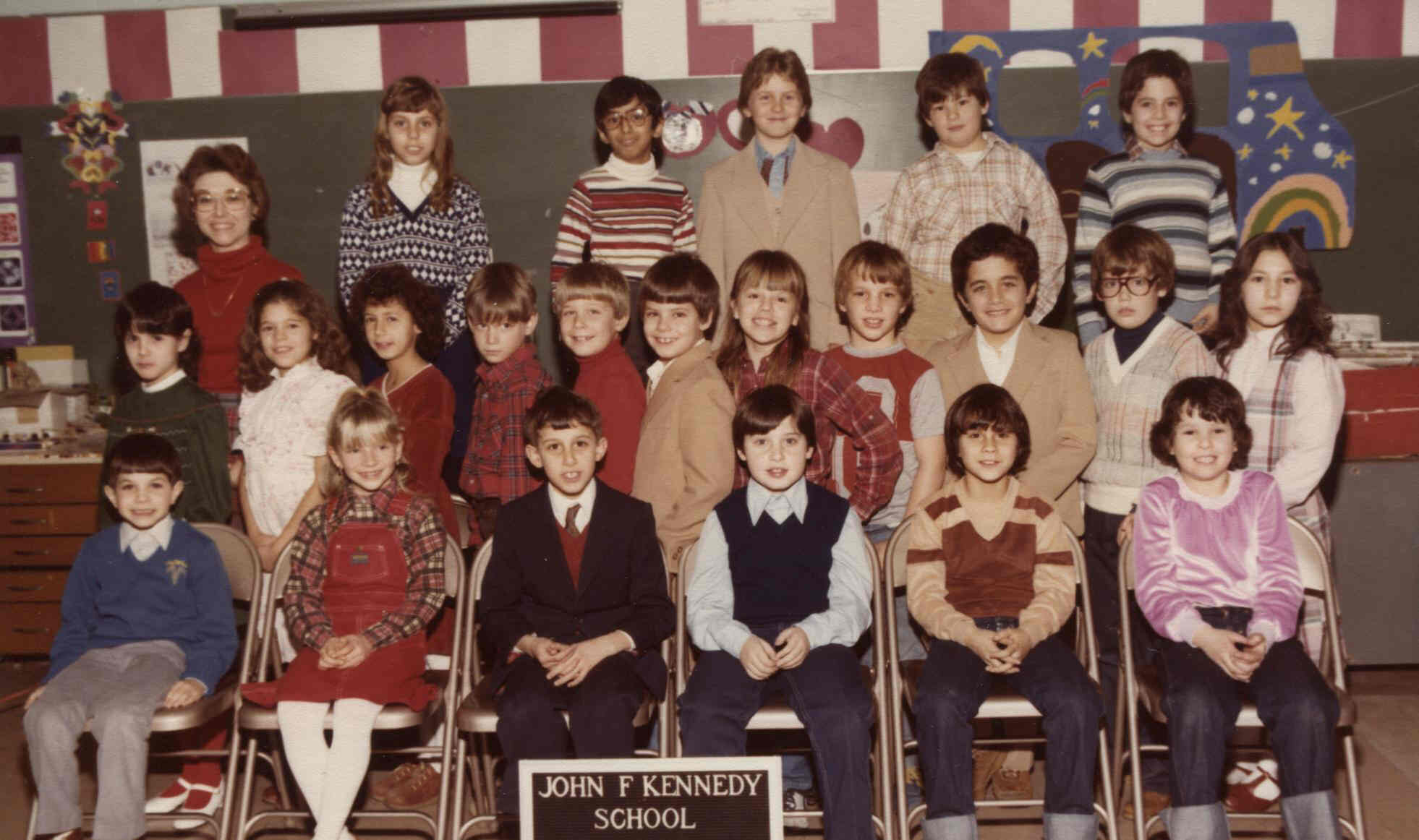 |
Raritan honored John Basilone with a statue that was unveiled in 1948.
One day thirty-three years after the unveiling of that statue a third grade class was on a walking tour of the historical places in Raritan.
When they were walking back to the school they stopped at the Basilone Statue.
As the kids sat on the grass, their teacher, Jo-Ann Liptak,
told them the story of John's heroic actions on Guadalcanal and Iwo Jima. This was the era of the Rambo movies and the teacher tried to make them
understand that John was basically a hometown boy who did not think of himself as a hero. He simply did what was asked of him under very dangerous conditions. |
Jo-Ann Liptak's Third Grade Class at
JFK School started it all in 1981. |
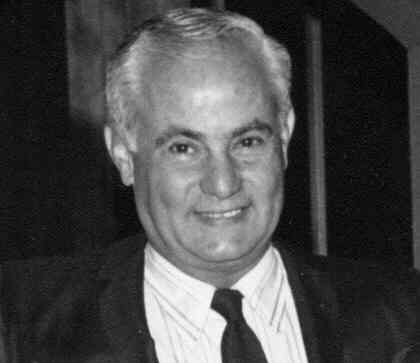 |
After they got back to the school a discussion evolved into how to acknowledge John's heroic actions and someone suggested a parade.
Jo-Ann Liptak and the class decided that was a good idea and they wrote letters to Mayor Steve Del Rocco asking him to consider having a parade.
Mayor Del Rocco was a boyhood friend of John and was also a pallbearer at John's internment at Arlington. He thought the idea of a parade was fantastic and he formed a parade committee and the first parade was held in November of that year (1981). |
| Steve Del Rocco organized the first parade. |
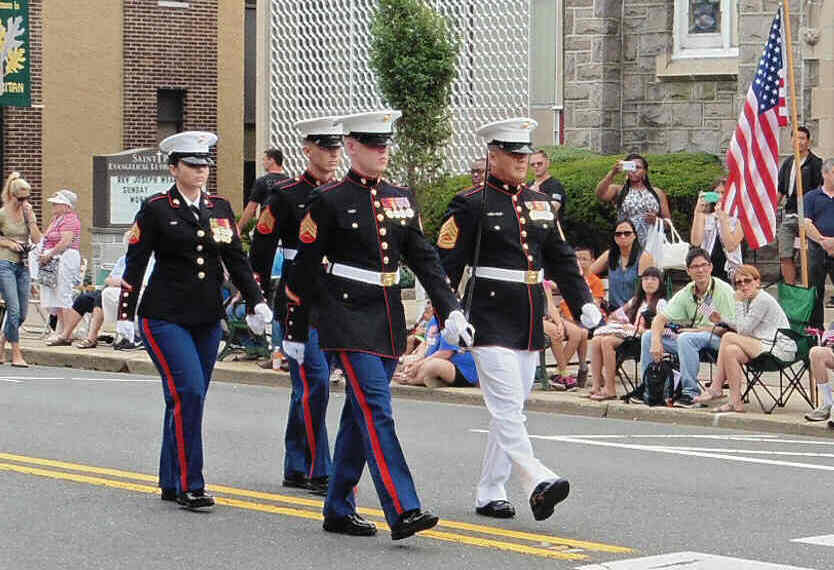 |
The first parade was small, there was just one band in that parade. But the parade grew in size each year –
with more groups marching and more people attending. The date for the early parades was the first Sunday in November to coincide with John Basilone’s Birthday.
But it was later changed to the fourth Sunday in September to ensure better weather.
Ironically, the first couple of parades appear not to have been covered by the local newspapers.
Also, if anyone took pictures of the first few parades, none have survived to today.
If anyone has articles or photos from the first few years of the Basilone Parade please contact this author at brucedoorly@gmail.com.
|
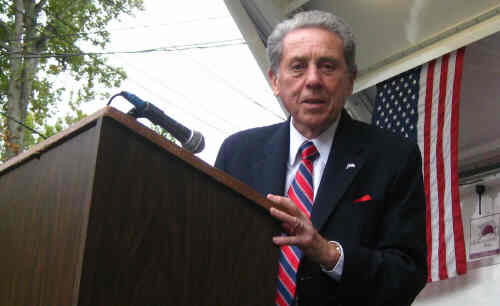 |
A parade committee was necessary for the planning. Steve Del Rocco was the chairman the first year. After that Jim DeCicco ran the parade for a few years.
Later Joseph Amorsa would take the position and then in 1988 John Pacifico would assume the chairmanship - a position that he held till his death in 2019 at age 91.
Pacifico turned what was just a day for Basilone into more of a weekend event as he added a regular Saturday night concert by a U.S. Marine Corp Band at the Raritan Valley Community College. This concert, held for 27 years was once very popular – tickets were hard to get. However, in recent years, with the population aging attendance dwindled, causing the concert to be discontinued. |
| John Pacifico led the parade 1988-2019. |
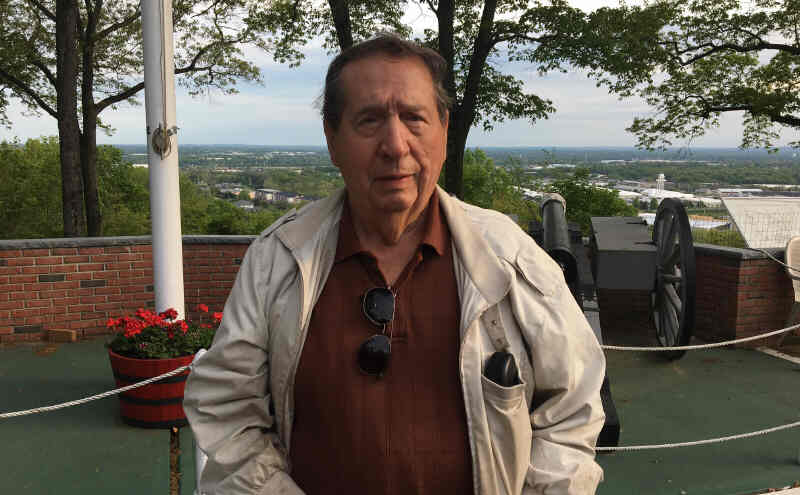 |
Over the years many people would serve on the parade committee. One original member of the parade committee - Herb Patullo -
served till his death in 2020.
Herb, who served in the Navy, was the Grand Marshal in 2017. |
| Original member of parade committee Herb Patullo. |
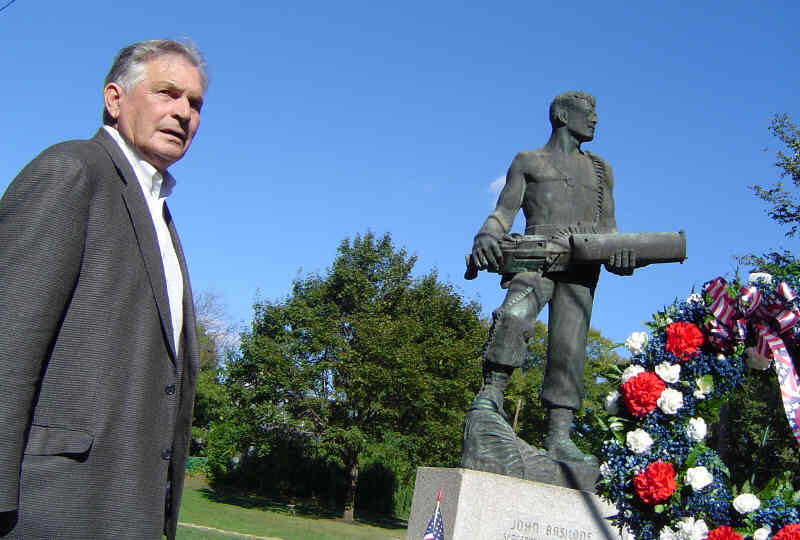 |
The parade has had some special guests.
A soldier who fought with Basilone at Iwo Jima, Chuck Tatum, came to the 2004 parade.
Chuck Tatum had written a book about the battle at Iwo Jima called “Red Blood, Black Sand”. He also had a documentary made about the battle. Chuck highlighted John Basilone in his book and documentary.
|
| Raritan welcomed Chuck Tatum in 2004. |
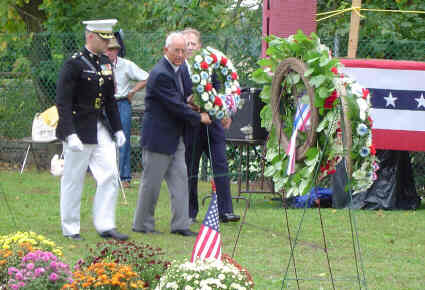 |
In 2006 Clinton Watters, who was the best man at Basilone’s Wedding in 1944, came to Raritan for parade weekend.
Clinton had stormed the island of Iwo Jima with Basilone. Clinton was injured in that battle.
In Raritan people lined up to talk with Clinton wherever he went. He gladly obliged - disappointing no one that weekend. |
| Clinton Watters lays a wreath at the statue |
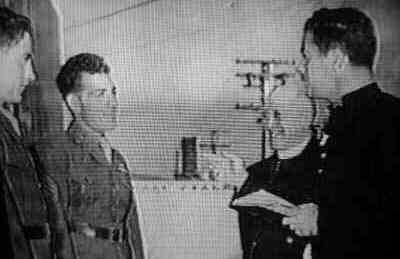 |
One year the priest who married John Basilone - Father Paul Bradley - rode as a guest in the parade.
Father Paul Bradley, a legend in the Marine Corp, was also at the battle at Iwo Jima. He ran to the injured and dying men giving them blessings. |
Father Paul Bradley is on the far right.
Clinton Watters and Basilone are on the left |
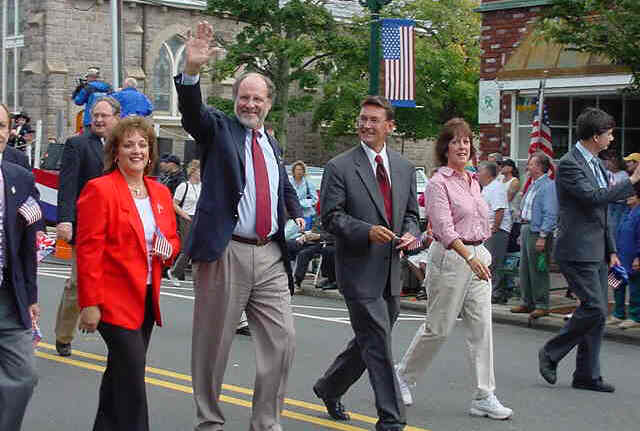 |
Two governors – Jim McGreevey and Jon Corzine – have attended the parade. |
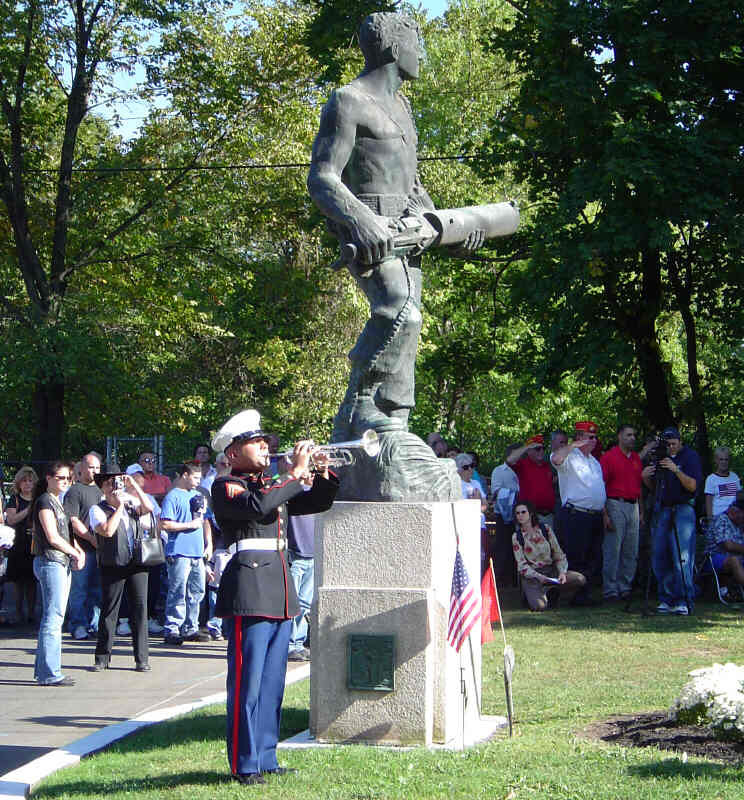 |
Each year after the parade a ceremony is held by the Basilone Statue.
Here a Marine Corp General speaks to the crowd. Also, wreaths are laid at the statue.
The ceremony concludes with the playing of taps. |
 |
The parade is held rain or shine. One rainy parade day this author, a member of the Basilone Parade Committee,
saw how much this parade means to people. Years back it was raining heavily before the parade.
As we launched the parade from the train station I remember feeling a bit silly thinking that we diehard patriots are having this
parade in the rain, but how many people are going to attend. I then walked down to the parade route and I was startled when I saw it was packed as usual.
It brought tears to my eyes. |
Former Third Grade Teacher and later Mayor
of Raritan Jo-Ann Liptak marches in the parade
|
|
The Basilone Parade continues to be held each year in Raritan.
It is a wonderful family event that attracts thousands of spectators. |













